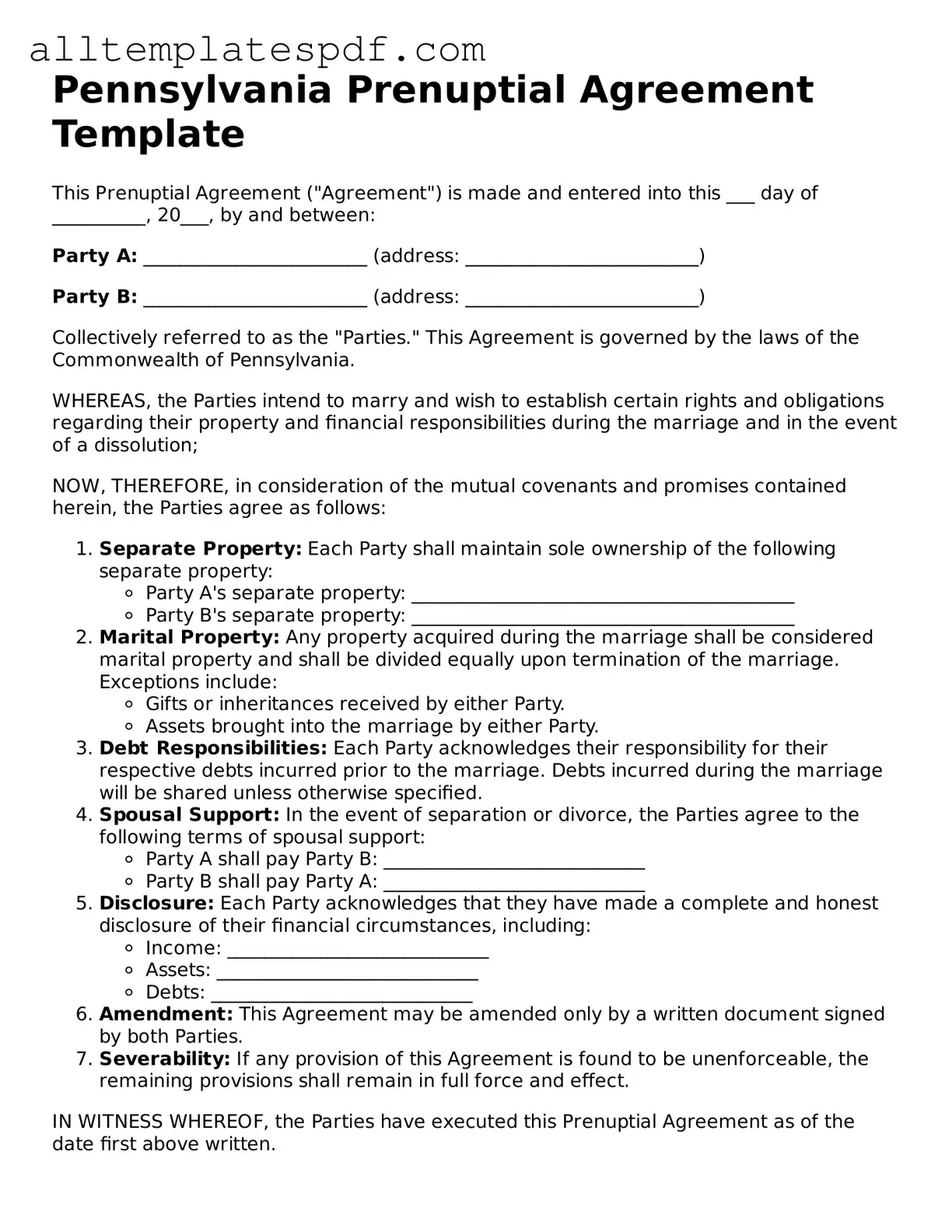When completing the Pennsylvania Prenuptial Agreement form, individuals often overlook important details that can lead to complications later. One common mistake is failing to fully disclose all assets and debts. Transparency is crucial in a prenuptial agreement. If one party hides significant financial information, the agreement may be deemed invalid in the future.
Another frequent error is not considering the future implications of the agreement. Many couples focus solely on their current financial situation without discussing how their circumstances might change over time. Including provisions for future income, property acquisition, or changes in financial status can prevent disputes later on.
Additionally, some individuals neglect to seek independent legal advice. While it may seem convenient to draft the agreement without professional help, this can lead to misunderstandings about rights and obligations. Each party should consult with their own attorney to ensure that their interests are adequately protected.
People also often fail to properly date and sign the agreement. A prenuptial agreement must be executed before the marriage to be enforceable. Without the correct signatures and dates, the document may not hold up in court.
Moreover, overlooking the need for specific language can create ambiguity. Vague terms may lead to differing interpretations down the line. Clear and precise language is essential to ensure that both parties understand their rights and responsibilities.
Finally, individuals sometimes rush through the process. Taking the time to thoroughly review the agreement and discuss its terms with one another fosters understanding and trust. A hasty approach can result in important details being missed, which may lead to conflicts in the future.
